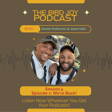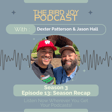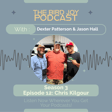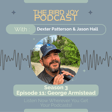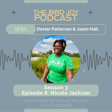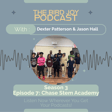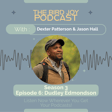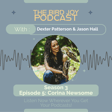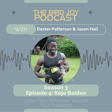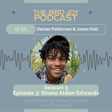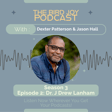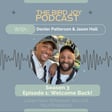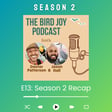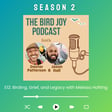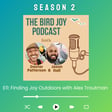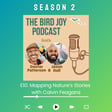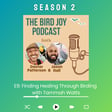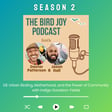Speaker
And they're not easy ones. Like I got one from Oklahoma, thinks they have a first cycle Vega golf. And then one in Wyoming, one in Wyoming, they think they have a first cycle Sladey back golf. So these are things you have to sit down and actually look at the entire photo set and wrap your head around what it is you're seeing. And so unfortunately, there's so many hours in a day where you can't get to all these inquiries. And so I have a backlog probably from last Monday of emails. I still need to answer. That's why we have North American gulls, right? We got about 15,000 people on there waiting to help. Hopefully I'd encourage your listeners. If you're not on Facebook, North American gulls, check it out. Yeah, for sure. And I think that's so it's so cool because you have a story in your in your book around a birdie and Kate May with ah another birder leading the birdwalk. And you guys had seen the gull down the beach that was written off as a great blackback. and And this is, again, prior to people really understanding what was happening with lesser blackback gulls. And I love the juxtaposition of as you start to question it first, right? And there's that cultural thing you're coming up against where the you know the person leading the birdwalk is like, no, this is what it is. Right. And they're very quick to it, but stopping and questioning it. And it sounded like you had other people around you too, that were willing to take that leap. And it was so funny. Cause as you guys talk about the bird getting closer and things, you know, things from a distance, yeah, it looked like pink legs and it was like 150 yards away. And now that it's closer, Oh, there's a tinge of yellow. Oh, okay. Right. Like that, that part about calling is also really special too, because I've heard you say this before that you can access goals so much easier than so many other birds, right? They're right there, right? Like you said, you know, they'll come get some French fries sometimes, you know, like, so So you can actually be weary of the tricks your eyes might play on you, your scope might play on you, your binoculars, right? And you can take the time if you have time to be patient and really hammer down on it. And that's, it's the cool part about the guide too, because it, like there's a whole section for folks that don't know on like light. how light changes. And I, you see it talked about all the time on the North American gold space. And even with some other birds, waterfowl and otherwise, right. You'll see that, but I've never seen anybody lay it out like that with just a ton of pictures, right? This goal guide has an insane amount of pictures, right? Which is really great, but making people comfortable with that fact that like, just cause you see it, that doesn't mean that's actually what it is. And you can be okay with that. You know, you can be okay with that and take your time around it. You know, every field trip I've ever led around goals, lighting comes up because someone will see something in the sky, white wing tips. And then two seconds later, Oh no, I was tricked. And that's what lighting will do. So yeah, I made it. I made it a point to give good examples, good images showing how things change on a dime like that. Yeah. It's not just goals either, right? The lighting, the lighting can do work wonders on you on a, do a number on you on a bunch of different bird species.

